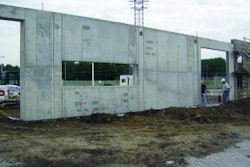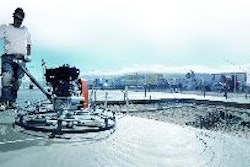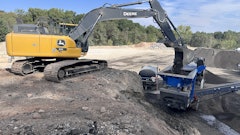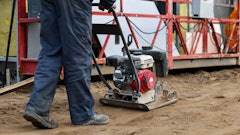
Central Texas will have 27% less money available for new road and rail projects through 2035 than the Capital Area Metropolitan Planning Organization estimated five years ago in its last long-range plan, according to the agency's preliminary estimates.
And although only about 3.5% of travel in the Austin area occurs on public transit, 42% of $9.6 billion for new projects would go for bus and rail. Spending for new roads and for added lanes on existing roads would drop more than 50% because a much greater percentage of the available money will go to maintenance of existing roads.
"Ludicrous," former Travis County Commissioner Gerald Daugherty said upon hearing about the high percentage of transportation funds that CAMPO says would go to public transit. Since the mid-1990s, he has pushed to reduce Capital Metro's 1% sales tax by half and use that money for roads.
Transportation money comes from a variety of sources - state and federal gas taxes, local bond sales backed by property taxes, the Capital Metro sales tax, toll revenue, transportation fees included in monthly utility bills and some general government revenue from other taxes and fees.
That money is spent, in general , two ways: to preserve and operate the existing roads, rails and bicycle/pedestrian facilities, and to build road lanes or expand transit or bicycle and pedestrian facilities.
Daugherty said the inability to find money for road projects - such as the $89 million Texas 45 Southwest tollway project in the precinct he formerly represented - is an outgrowth of decisions to put more money into public transit.
"We have done everything in our power as a community for 25 years to try to grow alternative modes of transportation," Daugherty said. "You could load up everything from the skateboard to the hot air balloon and collectively get no more than 3% or 4% of travel on anything other than the automobile. And yet we continue to push all this money down the pipe."
But Glenn Gadbois , a transportation consultant and public transit advocate, said deciding how to split money between road and public transit projects is complicated.
CAMPO officials estimate that even with the public transit spending, and denser growth patterns meant to dampen auto use, the proportion of local travel on public transit would actually fall slightly, to 3.4% by 2035 .
About $1.4 billion of the $10 billion that would be spent on transit overall locally would be grants from the Federal Transit Administration, Gadbois pointed out, money that cannot legally be spent on roads. As for the $140 million a year now generated by Capital Metro's 1% sales tax, Gadbois noted that the tax was approved by voters in 1985.
"What other legitimacy do you want?" he said.
In any case, transit advocates say key arteries Interstate 35 and MoPac Boulevard (Loop 1), confined by development, can't be expanded enough to accommodate what CAMPO expects to be a near doubling of the Central Texas population to 3.2 million in 2035. Public transit - buses and rail - will have to take up the slack, they say.
The CAMPO estimates, which officials with the planning agency say are still subject to refinements , paint a gloomy picture of the area's ability to respond to the presence of all those people.
Five years ago, when CAMPO did its last federally mandated plan for the next 25 years of transportation needs, it estimated that the area would have $22.8 billion to spend on transportation between 2006 and 2030 - $13.2 billion to build roads, rail and other facilities and $9.6 billion , or about $385 million a year, for existing transportation facilities and operations such as Capital Metro rail and bus service.
The preliminary estimate for the next CAMPO plan, which will cover 2011 to 2035 and will be voted on by the CAMPO board in May after a lengthy public input process, is that there would be $25.1 billion to spend on Central Texas transportation, a tidy $1 billion a yea r and 9.8 percent more than the 2006 to 2030 estimate. But the split between maintaining what's on the ground and adding capacity would be essentially reversed: Maintenance and operation of the current roads and transit would get $15.5 billion under the CAMPO estimate, and $9.6 billion would go to new roads and transit facilities.
CAMPO principal planner Stevie Greathouse said the greater emphasis on maintenance of existing systems reflects a growing awareness in the transportation industry that infrastructure has been allowed to deteriorate. Given projected inflation in construction costs, Greathouse said the actual ability to build road and rail capacity would fall by as much as 50%.
The inevitable result: Policymakers will continue to say no to folks such as the placard-waving suburbanites who stood alongside car-choked Brodie Lane last Friday morning complaining about traffic and about the delay of the Texas 45 Southwest project that would divert Hays County commuters away from Brodie.
DeAnne Rais , who lives in Shady Hollow, grew up in this area. Three decades ago, livestock outnumbered people. It was a time when a two-lane road with ditches alongside was more than enough to meet the need. No more.
"I don't want my son driving in this neighborhood," Rais said. "It's very scary."
The Texas 45 Southwest project got a public go-ahead in 1997 when Travis County voters approved bonds to buy right of way for the highway from FM 1626 to the south end of MoPac. The county later spent $3 million buying that right of way. Officials now say the only way to build it might be as a four-lane tollway. Even that might take some tax money to augment bonds that would be paid back by tolls.
Brad Hagan, who lives in Cimarron Park off FM 1626, will accept a toll road, or a two-lane free road, or perhaps just a clearing through the woods to South MoPac . Anything to avoid the Brodie backup.
"We'll take any design, and we'll take any funding," Hagan said. "I'd take a dirt road myself. Give us a bulldozer, and we'll push it through."
[email protected]; 445-3698
(GRAPHIC)
Transportation spending pinch (see microfilm)


















